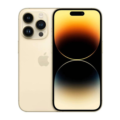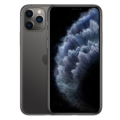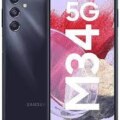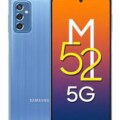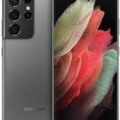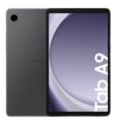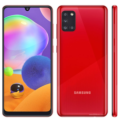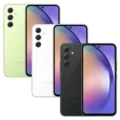- Home
- All Products
- Mobiles
- Apple iPhone 6 64 GB Price & Specs
Apple iPhone 6 64 GB Price & Specs


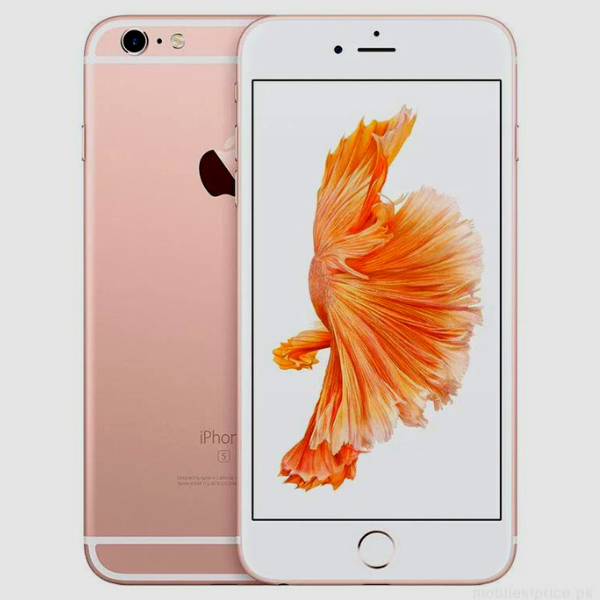
-
Processor: Apple A8 (20 nm)
-
RAM: 1 GB
-
Storage: 16/32/64/128GB
-
Display: 4.7 inches
-
Camera: 8 MP
-
Battery: iOS 8
Specs
General
| Device Type | Smart Phone |
| Model | Apple iPhone 6 64 GB |
| Announced | 01 September, 2014 |
| Released | 01 September, 2014 |
| Status | Available |
Network
| 2G Network | GSM 850 / 900 / 1800 / 1900 |
| 3G Network | HSDPA 850 / 900 / 1700 / 1900 / 2100 |
| 4G Network | LTE 700 / 850 / 900 / 1800 / 1900 / 2100 / 2600 |
| SIM <strong>SIM</strong> (Subscriber Identity Module) is a small card that contains mobile network subscriber's account information. This allows the phone using the card to attach to a mobile network. The SIM card is most commonly associated with GSM and UMTS mobile networks. Moving a SIM card from one phone to another allows a subscriber to switch mobile phones without having to contact their mobile network carrier. SIM cards can also be used by a phone to store limited amounts of data, such as phone numbers and text messages. | Micro SIM |
Design
| Type <strong>Design Type</strong> called form factor refers to a mobile phone's size, shape, and style as well as the layout and position of major components of phone. There are three major form factors seen in mobile phones => bar phones, folding phones and sliding phones. | Bar |
| Dimensions | 138.1 x 67 x 6.9 mm |
| Weight | 129 g |
| Colors | Space Gray, Silver, Gold |
Display
| Display Type <strong>Display Technology => </strong> A number of display technologies and types used in mobile phones => TFT (Thin Film Transistor), IPS (In-Place Switching), OLED (Organic Light Emitting Diode), AMOLED (Active-Matrix Organic Light-Emitting Diode), Super AMOLED (an even advanced version of AMOLED), Resistive Touchscreen (Resistive touchscreens contain two layer of conductive material with a very small gap between them which acts as a resistance), Capacitive Touchsceen (Capacitive touchscreen technology consists of a layer of glass coated with a transparent conductor) | IPS LCD |
| Size | 4.7-inches |
| Resolution | 750 x 1334 pixels |
| Display Colors <strong>Display Colors</strong> is refers to the number of different shades of colors that the screen is capable of displaying => 64K colors, 256K colors and 16 million colors, Obviously 16M is highest available range of colors and better than others. | 16M colors |
| Pixel Density <strong>Pixel Density (PPI)</strong> is refers to the concentration of pixels on a particular display, measured in pixels per inch (ppi). Pixel density is calculated by dividing the diagonal pixel resolution of a display by its diagonal size, higher pixel density better display quality. | 326 ppi density, |
| Features |
Ion-strengthened Glass, Oleophobic Coating |
Software
| Operating System <strong>OS => </strong> Every computer system run on a base software called Operating System (OS). Operating System controls all basic operations of the computer (such as smartphone, PDAs, tablet computers and other handheld devices). The Operating System allows the user to install and run third party applications (apps), apps are used to add new functionality to the device. | iOS 8 |
| User Interface <strong>UI</strong> or user interface of a device is the look and feel of the on-screen menu system. How it works, its color scheme, how it responds to button presses, all of these things are part of the user interface. | ios UI |
Hardware
| Chipset <strong>Chipset</strong> is a group of integrated circuits designed to perform one or a more dedicated functions, often with real time computing constraints, Popular smartphones are equipped with more advanced embedded chipsets that can do many different tasks depending on their programming. | Apple A8 |
| CPU <strong>CPU</strong> (Central Processing Unit) mostly known as processors, CPU processes instructions in order to carry out certain functions that make your device operate properly. Processors are often described as the brain of computers, smartphones and tablets, Smartphones and tablets rely on processors to carry out their every task, Processors are an incredibly important factor in selecting any type of computing device, including your smartphone. | Dual-core 1.4 GHz Typhoon |
| GPU <strong>GPU</strong> (Graphics Processing Unit) is a single-chip processor designed to rapidly manipulate and alter memory to accelerate the creation of images in a frame buffer intended for output to a display, This includes things such as lighting effects, object transformations, and 3D motion. | PowerVR GX6450 |
| RAM (Memory) <strong>RAM</strong> (Random Access Memory) is a type of computer memory that can be accessed randomly, any byte of memory can be accessed without touching the preceding bytes that allows information to be stored and accessed quickly from random locations. RAM is the most common type of memory found in computer systems, smartphones, tablets and other electronic devices. | 1 GB |
| Internal Storage <strong>Internal Storage</strong> is a data storage space (flash memory) mostly used in smartphones, tablets and other electronic devices where operating system, apps, music, photos, videos, files and other user data Is stored. | 16 GB, 64 GB, 128 GB |
| Card Slot <strong>Memory Card Slot</strong> is a special slot for inserting a memory card. Memory cards allow you to expand the phone's built-in memory, A memory card (sometimes called a flash memory card or a storage card) is a small storage medium used to store data such as text, pictures, audio, and video, for use on small, portable or remote computing devices such as mobile phones, mp3 players, digital cameras. | |
| Sensors <strong>Sensors</strong> are electronic components that detects and responds to some type of input from the physical environment. The specific input could be light, heat, motion, moisture, pressure and location, The output is generally a signal that is converted to use in computing systems, a location sensor, such as a GPS receiver is able to detect current location of your electronic device. | Fingerprint, Accelerometer, Gyro, Proximity, Compass, Barometer |
Camera
| Primary <strong>Camera</strong> is able to capture photographs and usually videos, The most important characteristics of a camera are the resolution (measured in megapixels), lens focus type (fixed or automatic), higher megapixel cameras are known to capture higher quality photos, but not always a good measurement of the photos quality. | 8 MP - 1080p @60fps, 720p @240fps (Slo-Mo) |
| Secondary | 1.2 MP, 720p, burst, HDR |
| Video | 1080p @60fps |
| Camera Features | 1.5 mega pixel size, geo-tagging, simultaneous HD video and image recording, touch focus, face and smile detection, image stabilization, panorama, HDR, Video (1080p@60fps, 720p@240fps) |
| Flash <strong>Flash Light => </strong> There is commonly two types of flash lights are used in camera mobile phones, LED Flash (LED flash offers lower power consumption with drive circuitry that takes up very little room, LEDs can be strobed faster than any other light source), Xenon Flash (xenon flash produces an extremely intense full-spectrum white light for a very short duration) |
Connectivity
| Wi-fi <strong>Wi-Fi</strong> is a popular wireless networking technology using radio waves to provide high-speed network connections that allows devices to communicate without cords or cables, Wi-Fi is increasingly becoming the preferred mode of internet connectivity all over the world. | Wi-Fi 802.11 a/b/g/n/ac, dual-band, Wi-Fi hotspot |
| Bluetooth <strong>Bluetooth</strong> is a wireless communications technology for exchanging data between mobile phones, headsets, computers and other network devices over short distances without wires, Bluetooth technology was primarily designed to support simple wireless networking of personal consumer devices. | v4.0 with A2DP |
| GPS <strong>GPS</strong> The Global Positioning System is a satellite-based radio navigation system, GPS permits users to determine their position, velocity and the time 24 hours a day, in all weather, anywhere in the world, In order to locate your position, your device or GPS receiver must have a clear view of the sky. | Yes + A-GPS support & Glonass |
| Wi-fi Hotspot | |
| USB | Yes |
| NFC <strong>NFC</strong> (Near field communication) is a set of standards for smartphones and similar devices to establish peer-to-peer radio communications with each other by touching them together or bringing them into proximity, usually no more than a few inches. | |
| Wireless Charging <strong>Wireless Charging</strong> (Inductive Charging) uses an electromagnetic field to transfer energy between two objects. This is usually done with a charging station. Energy is sent through an inductive coupling to an electrical device, which can then use that energy to charge batteries or run the device. |
Data
| GPRS <strong>GPRS</strong> (General Packet Radio Service) is a packet oriented mobile data service on the 2G and 3G cellular communication system's global system for mobile communications (GSM), Generally, GPRS is used for the purpose of wireless data transfer, such as sharing pictures and videos or browsing the Internet via a mobile phone connection. | |
| EDGE <strong>EDGE</strong> (Enhanced Data GSM Environment) is a wireless network technology generally considered the next step in the 2G network offers data transfer rates up to four times faster than ordinary GSM networks, Generally, EDGE is used for the purpose of wireless data transfer, such as sharing pictures and videos or browsing the Internet via a mobile phone connection. | |
| Speed | GPRS, EDGE, 3G (HSDPA, 42 Mbps; HSUPA, 5.76 Mbps), 4G LTE |
Messaging
| SMS <strong>SMS</strong> (Short Messaging Service) is a text messaging service component of phone, Web, or mobile communication systems. It uses standardized communications protocols to allow mobile phone devices to exchange short text messages over the networks. | Yes |
| MMS <strong>MMS</strong> (Multimedia Messaging Service) is a standard way to send messages that include multimedia content (audio clips, video clips and images) to and from mobile phones over wireless networks using the WAP protocol. | |
| Email <strong>Email</strong> (Electronic Mail) is a system for receiving, sending, and storing electronic messages, Similar to a letter, email is text messages that may contain files, images, or other attachments sent via the internet to a recipient by using applications and software prograps. An email address is required to receive email, and that address is unique to the user. |
Media
| Audio Playback | |
| Video Playback | |
| FM Radio | |
| Loudspeaker | |
| Ring Tones | MP3, WAV |
| Alert Types | Vibration, ringtones |
| Handsfree | 3.5mm Headphone Jack |
Battery
| Battery Type <strong>Battery Type => </strong> Cell phones run on various kinds of batteries depending on the manufacturer, phone size or shape and features. There are basically four types of cell phone batteries => Lithium Polymer, Lithium Ion, Nickel Metal Hydride and Nickel Cadmium. | Li-Poly (Lithium Polymer) |
| Capacity <strong>Battery Capacity</strong> is a measure (typically in Amp-hr) of the charge stored by the battery, and is determined by the mass of active material contained in the battery. The battery capacity represents the maximum amount of energy that can be extracted from the battery under certain conditions. | 1810 mAh |
| Placement | Fixed |
| Standby <strong>Standby Time</strong> is the total amount of time that you can leave your is fully charged, turned on and ready to send and receive calls or data transmissions before completely discharging the battery. | up to 250 hrs |
| Talk Time <strong>Talk Time</strong> is the longest time that a single battery charge will last when you are constantly talking on the phone under perfect conditions, Ambient temperature and highly dependent on the cellular network environment such as the distance to the closest cell network tower. | up to 14 hrs |
| Music Play | up to 50 hrs |
Apple iPhone 6 was introduced in 2014, it has a 4.7-inch, 750 x 1334-pixel, LED-backlit, IPS LCD screen. The phone is powered by Apple’s A8 processor, a 64-bit chip that offers a fluid and responsive experience. The 64 GB internal storage of the iPhone 6 offers plenty of room for pictures, videos, apps, and other content.
The iPhone 6 has a 1.2-megapixel front-facing camera for selfies and video calls in addition to an 8-megapixel primary camera with autofocus and dual-LED flash. For additional security and convenience, the device has a fingerprint sensor integrated into the home button.
The iPhone 6 is powered by Apple’s iOS, an intuitive operating system that gives users access to a sizable app store and a user-friendly interface. A rechargeable lithium-ion battery that can power the device for up to 14 hours of talk time is also included. With a smaller storage capacity than the 128 GB model, the iPhone 6 is still a well-designed smartphone that offers a balance of performance, features, and style.
iPhone 6 64 GB price in Pakistan
The storage capacity and condition, as well as other variables, can affect the price of the iPhone 6 64 GB in Pakistan. IPhone 6 64 GB price in Pakistan is around 47,000.
IPhone 6 price in Pakistan is probably lower, though, as it is now an older model and has been replaced by many newer iPhone models like the iPhone 6s and iPhone 6s plus. Check websites like iShopping, OLX, or Daraz, to find the most recent iPhone 5s prices in Pakistan. Remember that prices on these websites can vary, and you should always exercise caution when buying from individual sellers.
Disclaimer: The Apple iPhone 6 64 GB prices listed on this page are sourced from local shops and dealers and are updated daily. While we strive for accuracy, we cannot guarantee that the price information of the Apple iPhone 6 64 GB provided on this page is 100% correct, as human error is possible. We recommend that you visit your local shop for exact pricing information. Thank you for your understanding.

